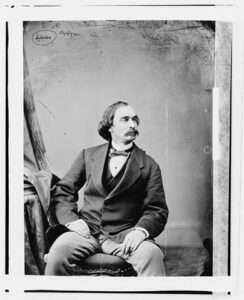A Glimpse Into Civil War History in West Philadelphia
Clark Park, the largest park in West Philadelphia, holds a significant place in American history. Not only is it a central green space for the community, but it also sits atop the former site of Satterlee Hospital, one of the largest Union Army hospitals during the Civil War. I recently learned that the park is home to a monument known as the “Gettysburg Stone”, which serves as a tribute to the many soldiers treated here and the heroic efforts of those who cared for them.
A Stone with History
The Gettysburg Stone, a boulder from the Devil’s Den area of the Gettysburg Battlefield, was dedicated in Clark Park in June of 1916. The monument honors the patriotic men and women who provided medical care to wounded soldiers at Satterlee Hospital, which once stood nearby. This large stone serves as a poignant reminder of the hospital’s role in treating thousands of soldiers, both Union and Confederate, following some of the Civil War’s bloodiest battles.
Satterlee General Hospital opened on June 19, 1862, located at the intersection of 44th Street and Baltimore Avenue in West Philadelphia. Initially, it served soldiers injured at the battles of Wilderness and Spotsylvania, but it became most famous for the care provided to those wounded at the Battle of Gettysburg in July 1863. At its peak, Satterlee Hospital housed up to 4,500 beds and treated over 120,000 sick and wounded soldiers, making it one of the largest hospitals of its kind during the Civil War.
Philadelphia’s Role in the Civil War
By the mid-19th century, Philadelphia was considered the medical capital of America. The city was home to prestigious institutions like the University of Pennsylvania’s medical school, which was highly regarded for its innovative medical research and education. With its well-established medical community and proximity to the battlefields of the Civil War, Philadelphia was a natural choice for establishing a major hospital to treat soldiers returning from the front lines.
In 1862, Surgeon-General William Alexander Hammond appointed Dr. Isaac Israel Hayes, a well-regarded physician and explorer, to oversee the creation of Satterlee Hospital. Hayes, who had previously been part of Arctic expeditions, was tasked with planning a hospital capable of accommodating thousands of wounded soldiers. He laid out a temporary city of canvas tents and wood structures on 15 acres of land in the countryside of West Philadelphia, hoping the fresh air would aid in the recovery of the men.
Life at Satterlee Hospital

Dr. Hayes was particularly dedicated to preserving the lives and limbs of the soldiers, instructing his staff to avoid amputations whenever possible. This policy, although challenging in an era before sterilization, likely helped reduce the number of infections and saved countless lives.
The Legacy of the Gettysburg Stone

The next time you find yourself in Clark Park, take a moment to stop by the Gettysburg Stone. It’s not just a monument to the past; it’s a piece of history that continues to resonate with the sacrifices of those who fought and cared for the wounded soldiers during the Civil War.






0 Comments